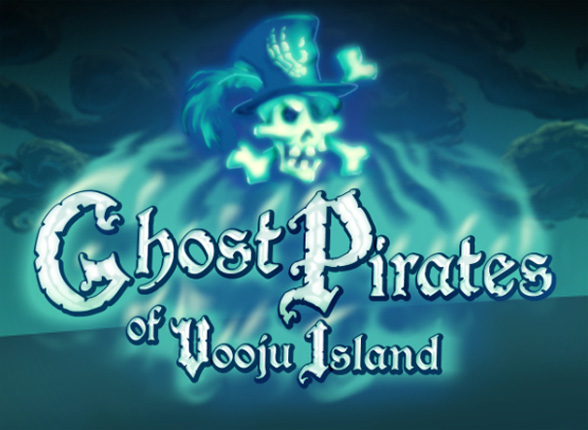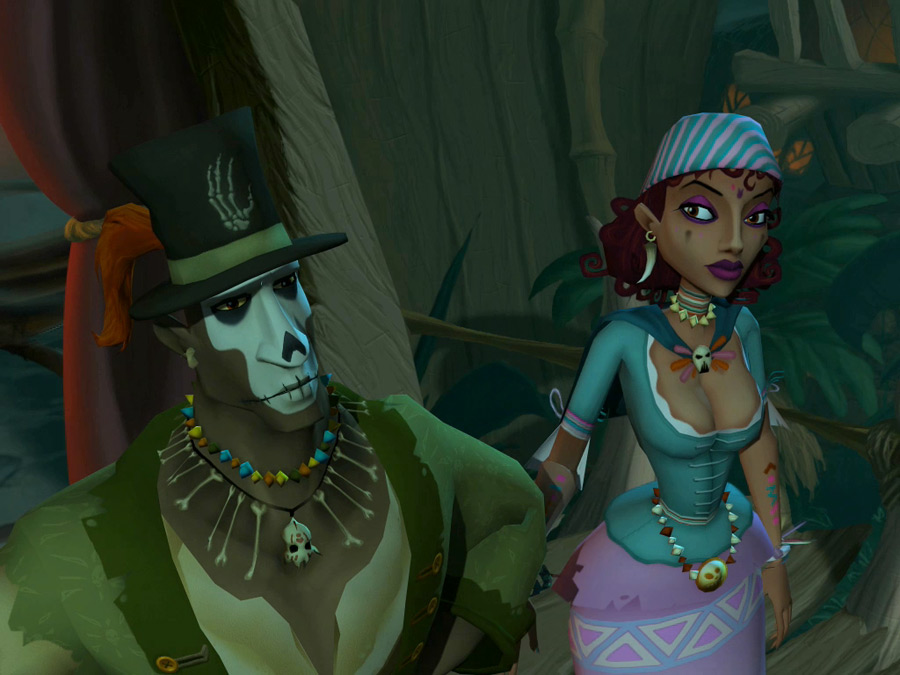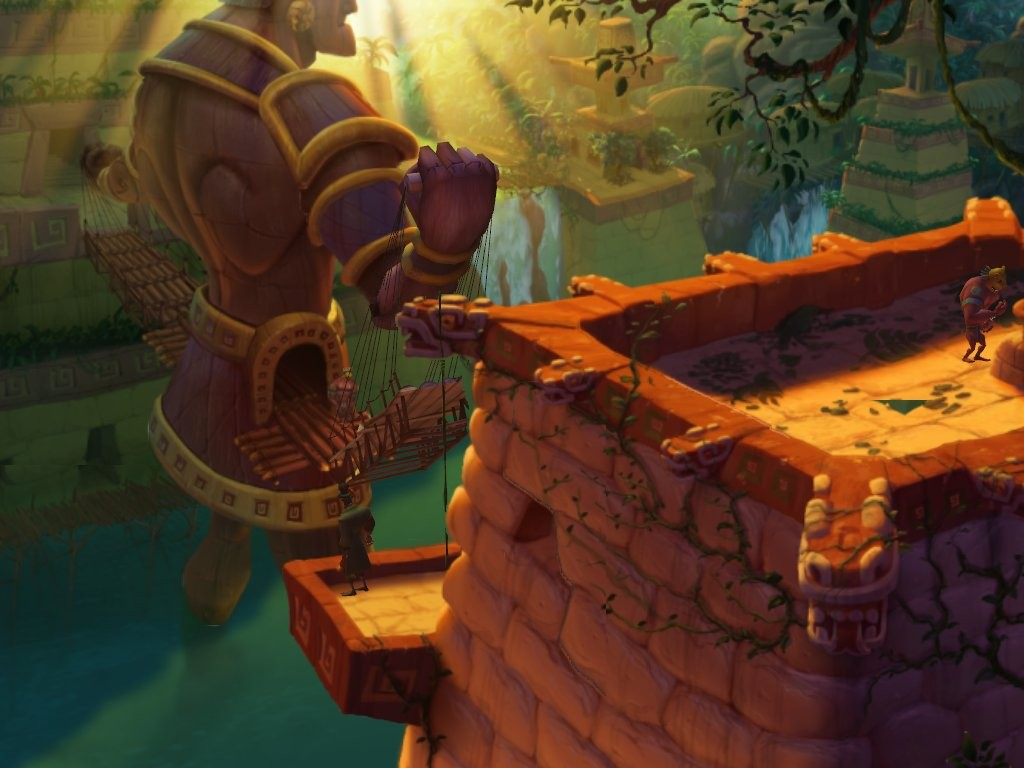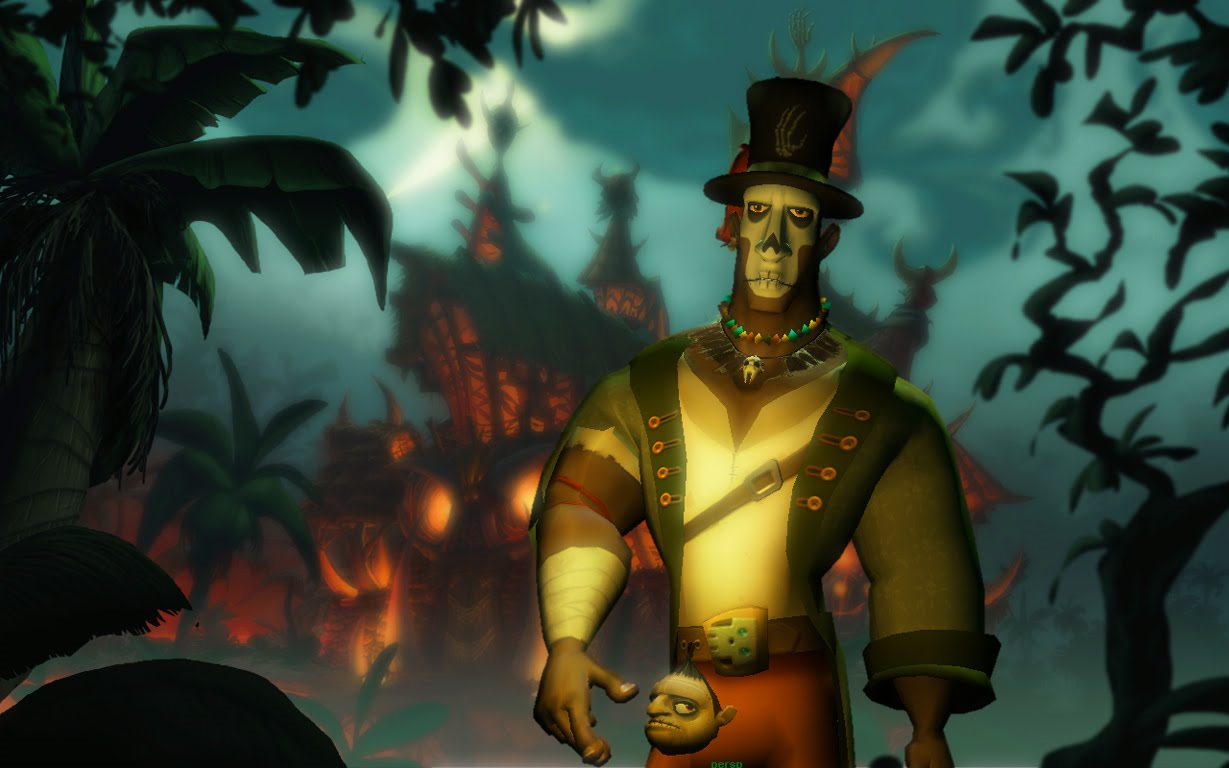Articles

Ghost Pirates of Vooju Island Page Two

The game’s unconventional storytelling bears mentioning. Ghost Pirates opens with lot going on and the implication of a lot of backstory, not all of which it’s in a particular rush to reveal. When the game abruptly begins (with a song that’s sort of like the game’s answer to “A Pirate’s Life for Me”), there’s a lot unexplained about the large cast’s motivations and relationships to each other, but by the ending you’ll become intimately familiar with the Azurrbean and the stories of its major and minor players, although at the same time left with the sense that there are many more left to tell.
While the need to follow along fairly closely may leave some players feeling lost, I personally loved the way that the game demonstrates respect for its audience by sharing plot information only as needed instead of cramming it all into a big, slogging, explanatory introduction sequence. While I do feel that Ghost Pirates retains a similar problem I had with AVS - namely, that when it comes time for the exposition to actually get delivered, it happens in overly concentrated bursts that grind everything to a halt – I really enjoyed the way it handled its narrative and appreciated the level of detail that was clearly put into the world’s conception, detail that plays a huge role in making it believable and worth visiting. Do not be shocked if your first impulse upon completing the game is replaying it to pick up on little story moments you might not have originally caught.

Fantastic artwork, which will clearly go down as Autumn Moon’s signature, contributes tremendously to that endearing quality as well. Like the stunning AVS, the whimsical and attractive art direction on display here is CMI-reminiscent but at the same time never anything other than its own style. The outstanding background illustrations, as you’ve no doubt seen, are detailed and absorbing, and are further enhanced by the deft use of foreground and special effects. The tropical settings they depict cover an impressive variety, from peaceful buccaneer towns, subterranean laboratories/mines, lavish, Aztec-inspired temples, cavernous hideouts behind waterfalls, and gator-laden swamps which seem to suffer from the meteorological phenomenon of eternal downpour. The character models that occupy these locales, while not obscenely detailed, are based upon appealing designs and are brought to life by solid in-game animations. And while the visuals are the star, the game’s seductive atmosphere is highly indebted to the musical score, another superb effort by Pedro Macedo Camacho. What it all adds up to is another really captivating universe, and that the studio can almost unconsciously be held to such a high standard with only two games under its belt is pretty incredible.
Unfortunately, it’s a standard they seem to have only been able to maintain at the expense of some admittedly less important aspects, aspects which mainly fall under technical polish. The most jarring of the game’s many technical shortcomings is manifested in the cutscenes. Though they’re not disasters, the FMV cinematics definitely give the impression of being extremely rushed. The animation is inferior to that seen in-game, and “graceless” would be a fair word to describe the way pre-rendered scenes segue from or throw to the adjacent sequences of gameplay. It’s as though money or time ran out before they could be finished, and so they were simply included “as-is.” It’s not hard to imagine that cuts had to be made that might have filled in the gaps and smoothed out the near nonexistent transitions that somewhat mar the overall experience.

The technical issues extend to the in-game presentation, with clipping issues, jerky animations and other visual glitches making constant appearances. To be fair, the game isn’t really “buggy” in the crashing or freezing sense of the word so much as lacking in that final coat of sheen that would have been necessary for its presentation to truly live up to the production values of the beautiful artwork. The audio suffers a bit as well from what one can only assume was an unrelenting production schedule – while the sound design and voice acting is generally strong (though the direction can be iffy – listen to a few jokes get botched due to the actor emphasizing the wrong word of a line), it’s often let down by some awkward editing. It’s not uncommon for a line to end up not working strictly due to the implementation, whether the issue is timing or simply the flow of a conversation not being able to come off as naturally as should have been the case. A few frustrations are also abound when it comes to matters of simple convenience - in the aforementioned charades puzzle, for example, the player is unable to exit the scene after they’ve blown an attempt, and is instead forced to watch it play out in its entirety before the next try. When you play the game, you’ll see why this was a poor design choice.
I think the tolerance for these issues will prove to vary wildly amongst players, because while the areas in which this game is lacking can be disappointing and rather glaring, their repair pretty much exclusively falls under the category of “would have been nice.” As I was playing through, a game that oddly kept springing to mind was Armed & Dangerous. Planet Moon’s offbeat shooter may have little in common with this story game in terms of what it sets out to accomplish, but it too had woefully shortchanged cinematics (which didn’t make them one iota less entertaining) and the general indication of a rushed final stretch in its development cycle with the sense that a few more months of polish would have resulted in a better game. But at the end of the day, Armed & Dangerous nails all the necessary elements to deliver on the bottom line: a supremely entertaining over-the-top action game, with its flaws being nothing more than things that you’re obligated to cite in a review. Ghost Pirates, with its wildly different focuses as a graphic adventure, is similarly victorious in that it gets right what counts. Having to cut corners is after all not a fault, but an unavoidable reality, and knowing where to do it can be as important as anything in influencing the caliber of the final product. When push comes to shove, aren’t the cinematics and the targets of much of my other criticisms exactly where the hits should be taken? Although it’s obvious that Ghost Pirates could have used more time, it’s also obvious where the team put their focus when compromise was called for. The choices were wise.

With Ghost Pirates of Vooju Island, Autumn Moon has proven that they’re not a one hit wonder, but a studio with the reliable capability of making great, old-school adventure games that are as memorable for their stories, worlds and characters as they are for the astonishing 2D artwork. While comparisons to Monkey Island are natural, they are also superficial, with Ghost Pirates being a thoroughly original experience whose well-crafted world would merit the sequel its creator apparently hopes to make. And while the game has a bit of a leaky hull in the form of exceptionally crude cinematics and an extremely thin layer of technical polish, it was built far too seaworthy and crewed by a team far too able-bodied to take on too much water. Ghost Pirates of Vooju Island is great fun that comes strongly recommended to all lovers of top-notch adventure games and of endearing stories, and it makes me even more excited for what the studio, now 2-0 and with a storytelling philosophy that’s becoming clearer and more refined with each outing, has in store with A Bat’s Tale and any other series it might be brewing. I wonder how the idea for that space robot dude is coming along?
Jason
March 18th, 2010

Pros: An original, well-crafted pirate adventure bearing all the design, artistic, and storytelling marks of seasoned veterans.
Cons: Extremely rough around the edges; Vooju and Azurrbean are stupid names.